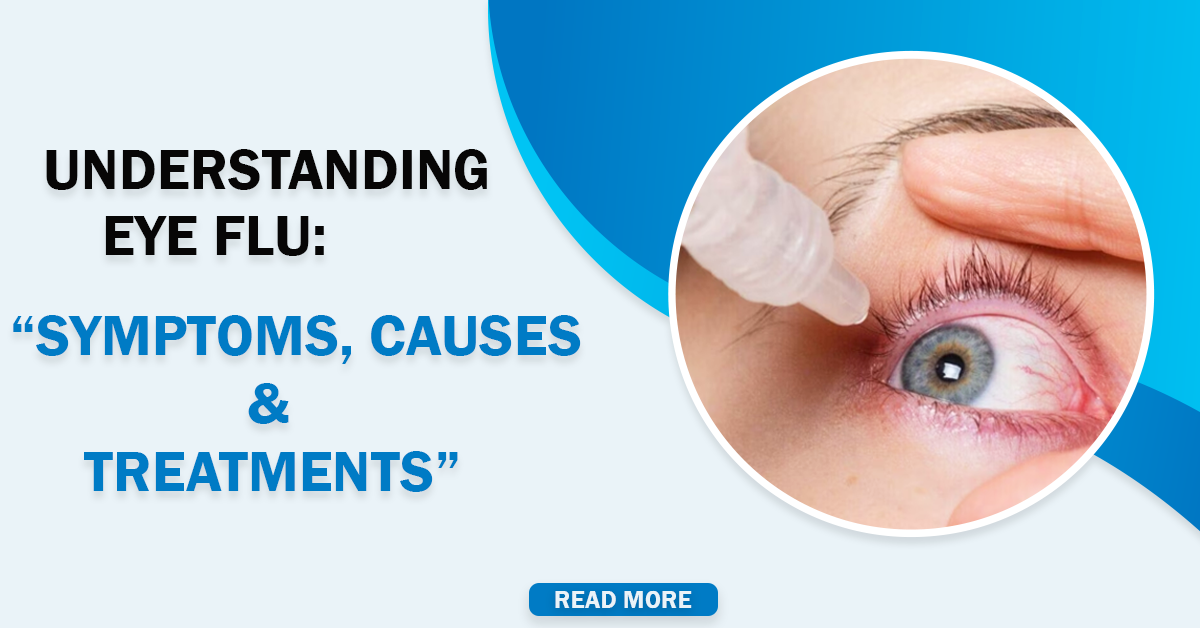No products in the cart.
Understanding Eye Flu: Symptoms, Causes, and Treatments
Eye flu, commonly known as conjunctivitis, is a highly contagious eye infection that affects millions of people worldwide. It is characterized by inflammation of the conjunctiva, the thin, transparent layer that covers the white part of the eye and the inner surface of the eyelids. This condition can be caused by viruses, bacteria, or allergies, each having its own set of symptoms and treatment approaches.
Symptoms of Eye Flu: The symptoms of eye flu can vary depending on the underlying cause. However, some common signs and symptoms include:
- Redness in the white part of the eye and inner eyelids.
- Watery or thick yellow/green discharge from the eyes.
- Itchiness, irritation, and a gritty feeling in the eyes.
- Sensitivity to light.
- Swollen eyelids.
- Crusting of the eyelids, especially in the morning (in bacterial conjunctivitis).
- Blurred vision.
Causes of Eye Flu:
Viral Conjunctivitis: This is the most common form of eye flu and is caused by a virus, such as an adenovirus. It is highly contagious and can spread through coughing, sneezing, or touching contaminated surfaces and then touching the eyes.
Bacterial Conjunctivitis: Caused by bacteria, usually Streptococcus pneumoniae or Staphylococcus aureus. It can also be transmitted through direct contact with infected individuals or contaminated objects.
Allergic Conjunctivitis: This type of eye flu occurs when the conjunctiva reacts to allergens like pollen, pet dander, or dust mites. It is not contagious but can cause significant discomfort.
Treatment of Eye Flu: The treatment for eye flu depends on the underlying cause. It is crucial to consult an eye doctor or ophthalmologist for an accurate diagnosis and appropriate treatment. Some general treatment approaches include:
Viral Conjunctivitis: Most cases of viral conjunctivitis are self-limiting and will clear up on their own within 1-2 weeks. Applying warm compresses and using lubricating eye drops may help soothe the discomfort.
Bacterial Conjunctivitis: Antibiotic eye drops or ointments are commonly prescribed to reduce the duration and severity of bacterial conjunctivitis. It is essential to complete the full course of antibiotics as prescribed.
Allergic Conjunctivitis: Avoiding allergens that trigger the condition is the key to managing allergic conjunctivitis. Antihistamine eye drops or oral medications may also be recommended to alleviate symptoms.
Preventing Eye Flu: To reduce the risk of contracting or spreading eye flu, follow these preventive measures:
Wash your hands frequently, especially before touching your eyes or face.
Avoid sharing personal items like towels, cosmetics, and contact lenses.
If you wear contact lenses, follow proper hygiene practices, and replace them as directed by your eye care professional.
Avoid close contact with individuals who have eye flu symptoms.
Clean and disinfect frequently touched surfaces regularly.




